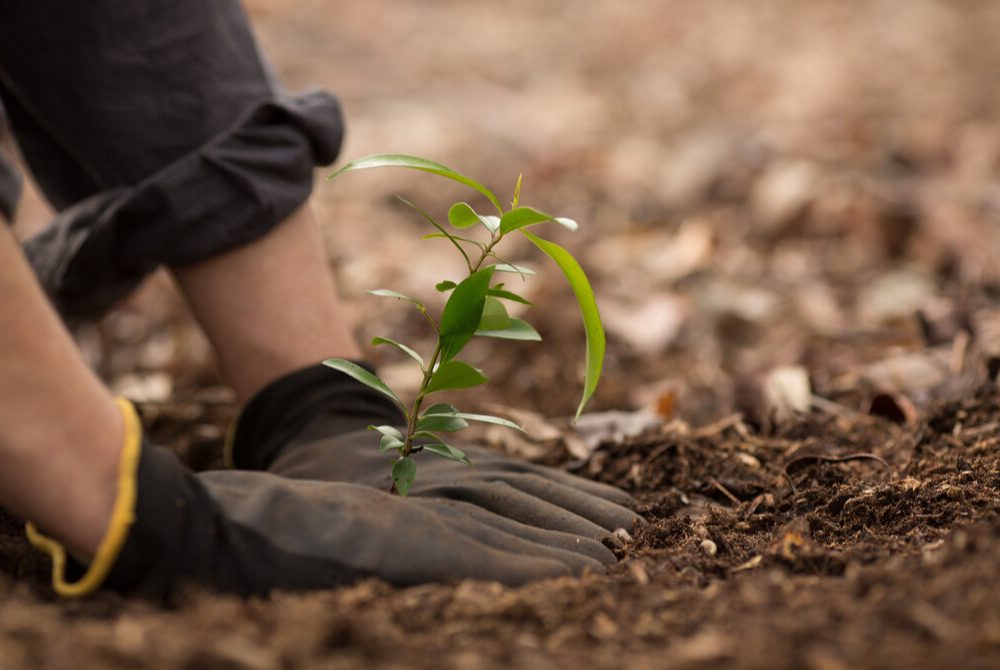
Agroforestry and tree planting initiatives are pivotal in addressing some of the most pressing environmental challenges of our time. These practices not only enhance biodiversity but also contribute significantly to soil health, water conservation, and climate change mitigation. By integrating trees into agricultural landscapes, farmers can create a more resilient ecosystem that supports both crop production and wildlife habitats.
- Identifying Potential Funding Sources for Agroforestry and Tree Planting Projects
- Developing a Comprehensive Funding Proposal
- Building Partnerships and Collaborations for Funding Support
- Showcasing the Environmental and Social Benefits of Agroforestry and Tree Planting
- Demonstrating the Economic Viability of Agroforestry and Tree Planting Initiatives
- Engaging with Government and Non-Governmental Organizations for Funding Opportunities
- Implementing Effective Fundraising and Grant Writing Strategies
The symbiotic relationship between trees and crops can lead to improved yields, reduced erosion, and enhanced carbon sequestration, making agroforestry a sustainable solution for food security and environmental restoration. Moreover, tree planting initiatives play a crucial role in combating deforestation and land degradation. As urbanization and industrialization continue to encroach upon natural habitats, the need for reforestation becomes increasingly urgent.
Trees act as natural air filters, absorbing carbon dioxide and releasing oxygen, which is essential for maintaining a healthy atmosphere. Additionally, they provide shade and shelter for various species, contributing to the preservation of biodiversity. By promoting agroforestry and tree planting, NGOs can foster community engagement, raise awareness about environmental issues, and empower local populations to take action towards sustainable land management.
Identifying Potential Funding Sources for Agroforestry and Tree Planting Projects
Securing funding for agroforestry and tree planting projects is essential for their successful implementation. Various funding sources exist, ranging from government grants to private foundations and international organizations. NGOs should begin by researching local, national, and international funding opportunities that align with their project goals.
Government agencies often have specific programs dedicated to environmental conservation, agriculture, and rural development that can provide financial support for agroforestry initiatives. In addition to government funding, NGOs can explore partnerships with private sector companies that prioritize corporate social responsibility (CSR). Many businesses are increasingly interested in supporting environmental initiatives as part of their CSR strategies.
By aligning project objectives with the interests of potential corporate sponsors, NGOs can create mutually beneficial partnerships that provide financial resources while enhancing the company’s public image. Furthermore, international organizations such as the United Nations or the World Bank often have grant programs aimed at promoting sustainable development practices, including agroforestry and reforestation efforts.
Developing a Comprehensive Funding Proposal
Crafting a compelling funding proposal is a critical step in securing financial support for agroforestry and tree planting projects. A well-structured proposal should clearly outline the project’s objectives, methodologies, expected outcomes, and budgetary requirements. It is essential to articulate the significance of the project in addressing environmental challenges while also highlighting its potential social and economic benefits.
Providing data and evidence to support claims can enhance the credibility of the proposal and demonstrate the project’s feasibility. Additionally, NGOs should tailor their proposals to align with the specific interests and priorities of potential funders. This involves conducting thorough research on the funding organization’s mission, past projects, and funding criteria.
By demonstrating an understanding of the funder’s goals and how the proposed project aligns with them, NGOs can increase their chances of securing funding. Including letters of support from community stakeholders or partners can also strengthen the proposal by showcasing local buy-in and collaboration.
Building Partnerships and Collaborations for Funding Support
Establishing partnerships and collaborations is vital for enhancing the impact of agroforestry and tree planting initiatives while also increasing funding opportunities. Collaborating with local communities, government agencies, academic institutions, and other NGOs can create a more robust project framework that leverages diverse expertise and resources. For instance, partnering with agricultural extension services can provide valuable insights into best practices for integrating trees into farming systems, while collaboration with research institutions can facilitate monitoring and evaluation efforts.
Moreover, building relationships with local communities is essential for ensuring project sustainability. Engaging community members in the planning and implementation phases fosters a sense of ownership and responsibility towards the project’s success. This grassroots involvement not only enhances the likelihood of long-term sustainability but also attracts potential funders who value community-driven initiatives.
By showcasing a collaborative approach that emphasizes shared goals and mutual benefits, NGOs can create compelling narratives that resonate with funders.
Showcasing the Environmental and Social Benefits of Agroforestry and Tree Planting
To attract funding for agroforestry and tree planting projects, it is crucial to effectively communicate their environmental and social benefits. Highlighting how these initiatives contribute to biodiversity conservation, soil health improvement, and climate resilience can resonate with funders who prioritize environmental sustainability. For example, case studies demonstrating successful agroforestry practices that have led to increased crop yields or enhanced ecosystem services can serve as powerful testimonials to the effectiveness of these approaches.
In addition to environmental benefits, NGOs should emphasize the social impact of agroforestry initiatives on local communities. Tree planting projects often create job opportunities in nurseries, planting activities, and maintenance efforts, thereby contributing to local economies. Furthermore, these initiatives can enhance food security by diversifying agricultural production through the integration of fruit-bearing trees or medicinal plants.
By presenting a holistic view of the benefits associated with agroforestry and tree planting, NGOs can appeal to a broader range of funders who are interested in both environmental conservation and social development.
Demonstrating the Economic Viability of Agroforestry and Tree Planting Initiatives
Economic viability is a critical consideration for funders when evaluating agroforestry and tree planting projects. NGOs must provide evidence that these initiatives can generate sustainable income for local communities while also delivering environmental benefits. This can be achieved by showcasing successful models where agroforestry practices have led to increased profitability for farmers through diversified income streams.
For instance, integrating timber production with crop cultivation can provide farmers with both immediate returns from crops and long-term financial gains from timber sales. Additionally, NGOs should explore innovative financing mechanisms such as payment for ecosystem services (PES) or carbon credit markets that can enhance the economic sustainability of agroforestry projects. By quantifying the ecosystem services provided by trees—such as carbon sequestration or water filtration—NGOs can create opportunities for farmers to receive compensation for their conservation efforts.
Presenting these economic arguments alongside environmental benefits can make a compelling case for funding support.
Engaging with Government and Non-Governmental Organizations for Funding Opportunities
Engaging with government agencies and other non-governmental organizations is essential for identifying funding opportunities for agroforestry and tree planting projects. Building relationships with relevant government departments can provide insights into upcoming grant programs or policy initiatives that support environmental conservation efforts. Attending workshops, conferences, or networking events focused on sustainable agriculture or forestry can facilitate connections with key stakeholders in this field.
Furthermore, collaborating with other NGOs working on similar issues can create synergies that enhance funding prospects. Joint proposals that combine resources and expertise can be more attractive to funders looking for comprehensive solutions to complex environmental challenges. By fostering a collaborative spirit within the NGO community, organizations can share knowledge, best practices, and funding opportunities that benefit all parties involved.
Implementing Effective Fundraising and Grant Writing Strategies
To successfully secure funding for agroforestry and tree planting initiatives, NGOs must implement effective fundraising strategies alongside strong grant writing practices. Diversifying funding sources is crucial; relying solely on one type of funding can be risky. NGOs should explore various avenues such as crowdfunding campaigns, corporate sponsorships, individual donations, and grant applications to create a more stable financial foundation.
In terms of grant writing, clarity and conciseness are key elements that funders appreciate. Proposals should be well-organized, free from jargon, and focused on conveying essential information succinctly. Including measurable objectives and clear timelines helps funders understand the project’s scope and anticipated outcomes.
Additionally, following up with funders after submitting proposals demonstrates professionalism and commitment to transparency. In conclusion, agroforestry and tree planting initiatives hold immense potential for addressing environmental challenges while promoting social equity and economic viability. By understanding the importance of these practices, identifying funding sources, developing comprehensive proposals, building partnerships, showcasing benefits, demonstrating economic viability, engaging stakeholders, and implementing effective fundraising strategies, NGO professionals can significantly enhance their chances of securing support for impactful projects.
Through collaborative efforts and innovative approaches, we can pave the way for a greener future that benefits both people and the planet.




